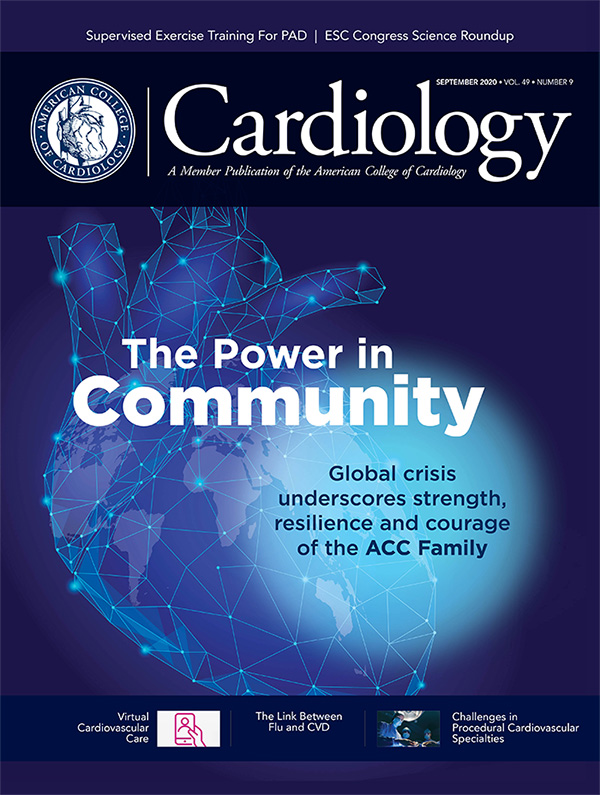The Vexing Challenge of Physician Slowdown: How to Create an Effective Policy

Like perennial flowers appearing in the spring, each and every year the thorny issue of physician slowdown breaks into the top five concerns for cardiovascular group and program leaders. Rarely does a cardiologist practice at full throttle and then simply retire on a chosen date.
Typically, he or she will reduce day and/or evening responsibilities to extend the ability to continue practicing. While this may seem like a positive approach, given the backdrop of projected physician shortages (Figure 1), it presents significant challenges for program leadership.
"We're not anxious to end a doctor's career," says Larry Sobal, chief executive officer of the Heart and Vascular Institute of Wisconsin.
"If structured right, part-time cardiologists can be extremely valuable, particularly in an environment where supply is tight. At the same time, you have to protect the vitality of the group and, at the end of day, you have to get the work done – all of the work, even those less desirable activities."
Figure 1
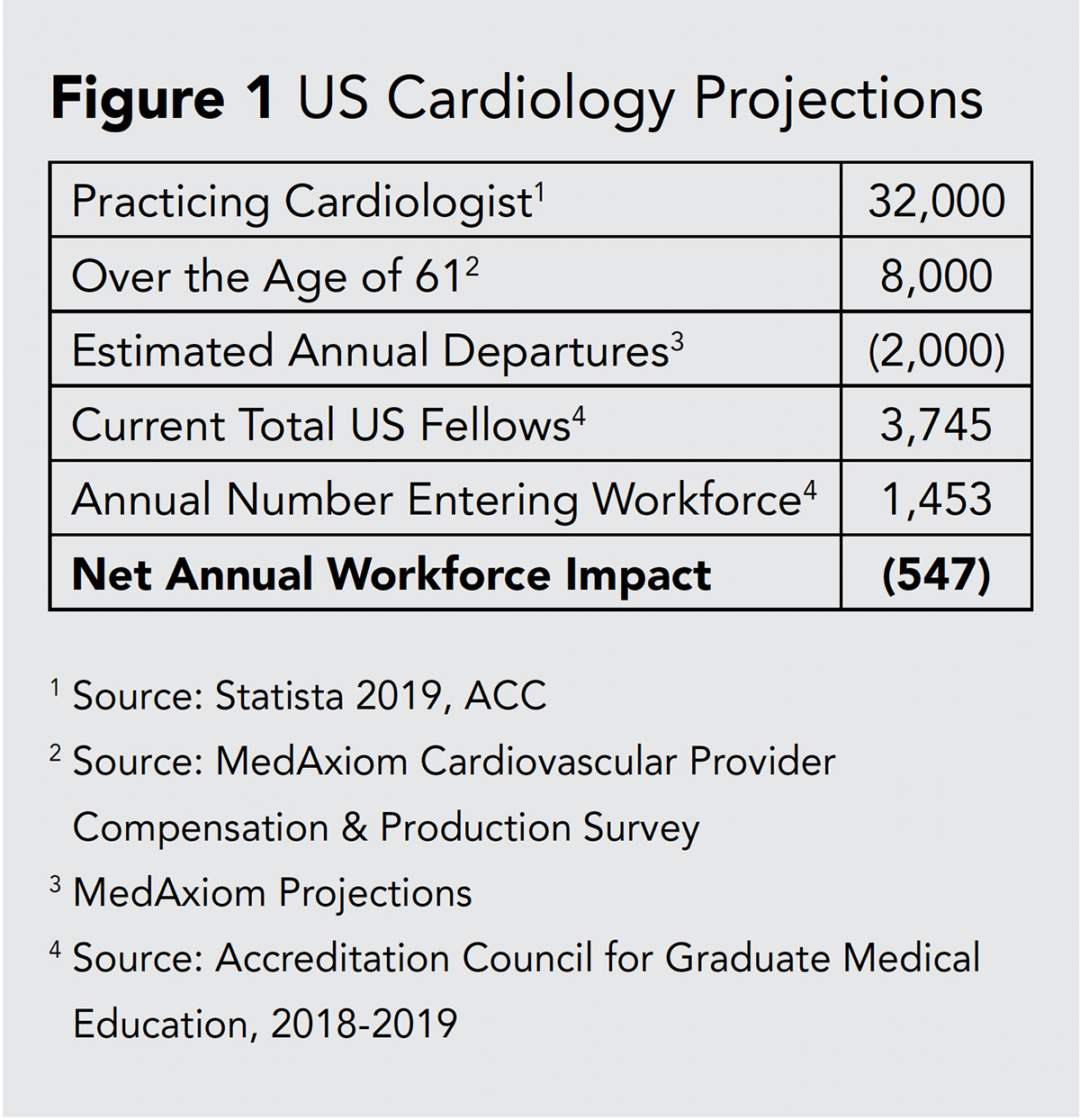
Figure 2
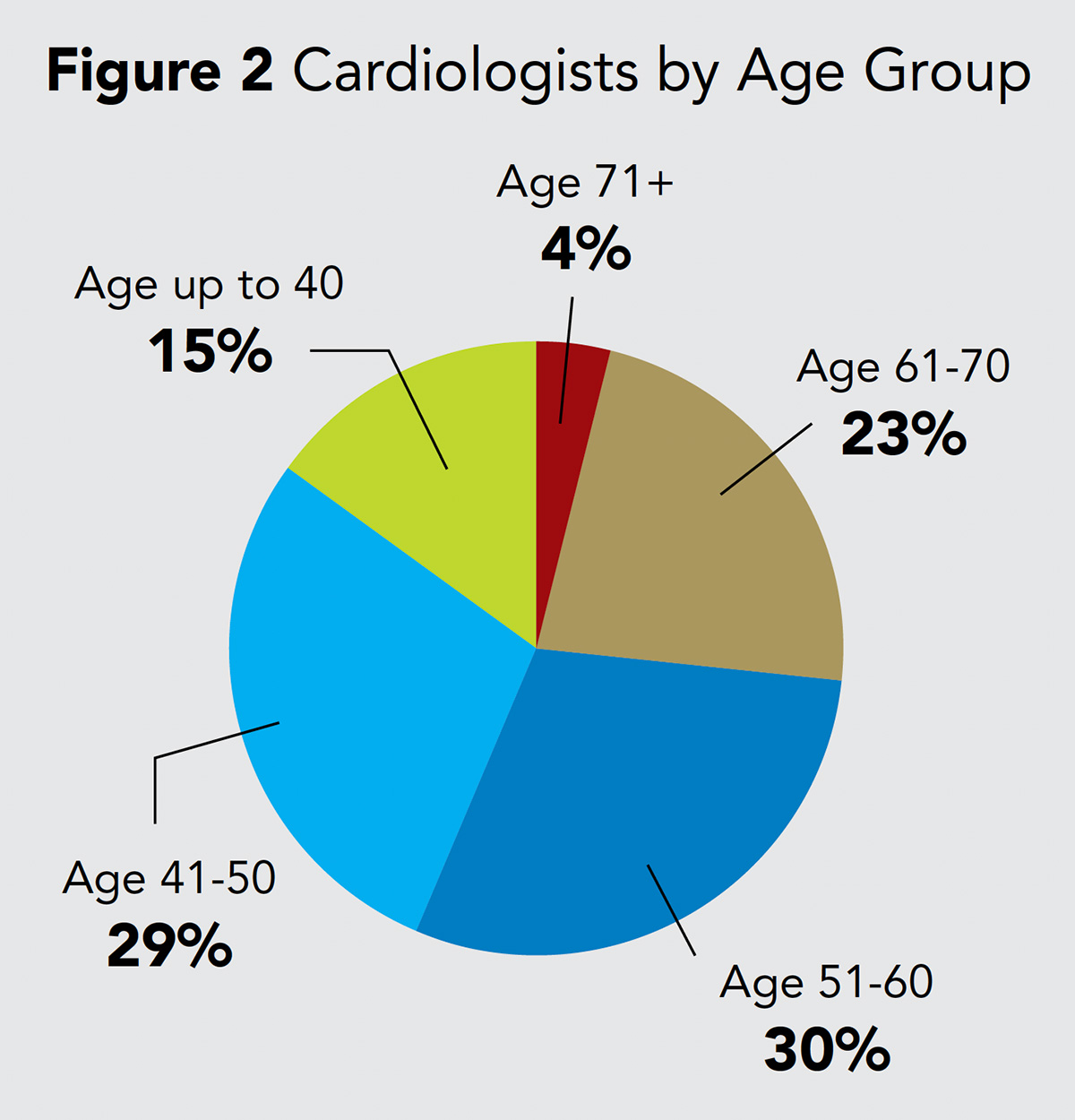
If you ask 100 cardiologists to identify the worst part of their chosen profession 99 will likely answer night/weekend call responsibilities. Sleep deprivation and the stress of a 2 a.m. lifesaving intervention coupled with long work hours takes a physical and emotional toll on the human body.
Thus, the more who share in these undesirable duties, the better. Therefore, when a physician asks to be relieved – or even simply cut back – on call participation, absent a new hire, the remaining cardiologists take on more. Money can sometimes fix this imbalance, but not always.
"We really want to maintain flexibility for these physicians, but at the same provide value to the overall group," says Michael Kourany, MD, FACC, a member of the St. Vincent Medical Group Cardiology Executive Committee that created their slow down policy.
"It's striking the right balance between high burden work – like hospital coverage and call in our case – and the high impact work, like reading studies and procedures."
Compounding the stickiness of this situation is the fact that predominantly those asking to move into a reduced capacity are senior members of the group, with long tenures of service and – in many cases – pioneers who founded the group.
This heightened status can make conversations around policy development emotional, increasing the chances for tension and negative fallout.
This Problem Isn't Going Away
Recent data published by MedAxiom1 suggest this challenge will not be leaving leadership's desk anytime soon. As shown in Figure 2, more than one in four cardiologists is age 61 or older.
While those data by no means suggest retirement is imminent for this cohort, it is very likely that these physicians are nearer the end of their careers than the beginning.
Further, data show that the older a cardiologist becomes, the more likely she or he is to reduce call participation at some level (Figure 3) and reduce daytime workloads (Figure 4).
Figure 3
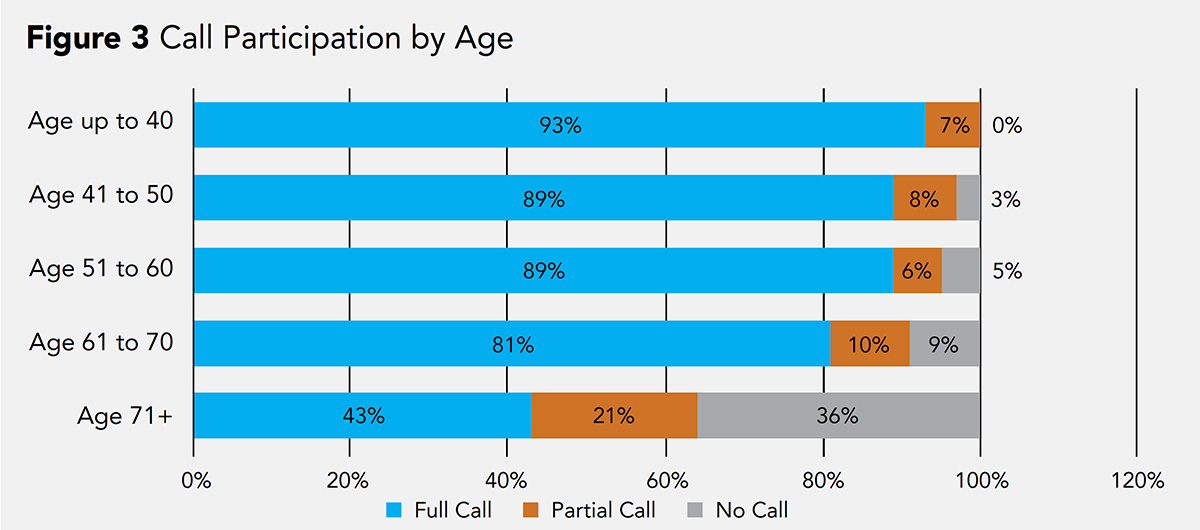
Figure 4
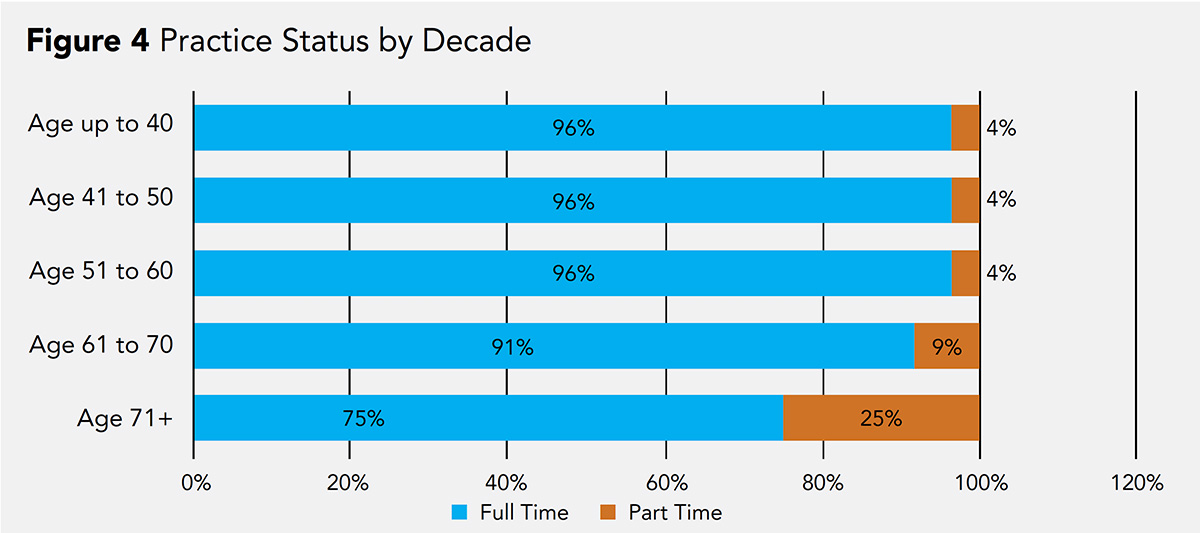
In fact, at age 71 and older, less than half of working cardiologists are taking full call and at the next decade younger, nearly 20% have reduced call participation. Likewise, a quarter of cardiologists age 71 and older have reduced daytime workloads.
Age also plays a role in overall production, measured in work relative value units (wRVUs). In Figure 5 we see that a cardiologists' median wRVU production peaks in the fourth decade and then begins to decline.
Figure 5
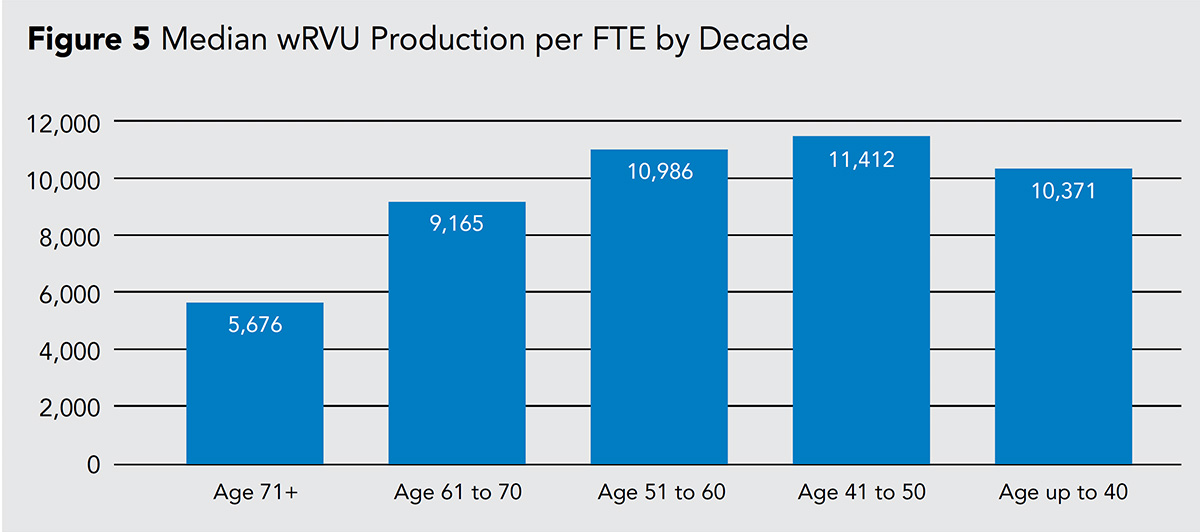
The median production for a cardiologist in her or his 60s is 80% that of a cardiologist in her or his 40s. By the 70s, median wRVU production has fallen by more than half from the peak.
Here lies a significant part of the slowdown challenge. If a physician reduces or discontinues call participation but continues to carry full or nearly full daytime workloads, the practice may not feel that it can support a full new hire.
It is rare to find a physician who is only looking for call responsibilities, although some larger programs have added cardiac "nocturnists," so a new hire will bring additional daytime capacity that could diminish production of the remaining employees.
The flipside is that absent a new hire there will be heavier call burden for those remaining. On top of all of this may be space and exam room capacity issues with the addition of another daytime doctor.
As noted earlier, a common way to deal with slowdown is through compensation. Figures 6 and 7 show the impact of practice and call reductions on median compensation, as well as the influence that reductions in duties have on wRVU production.
What is noteworthy is the very minor effect that reducing call participation has on wRVU production per FTE (Figure 7) with just a 3% diminishment of the median per FTE. Whereas reducing from full- to part-time status results in a greater than 40% reduction in median wRVUs per FTE.
Figure 6
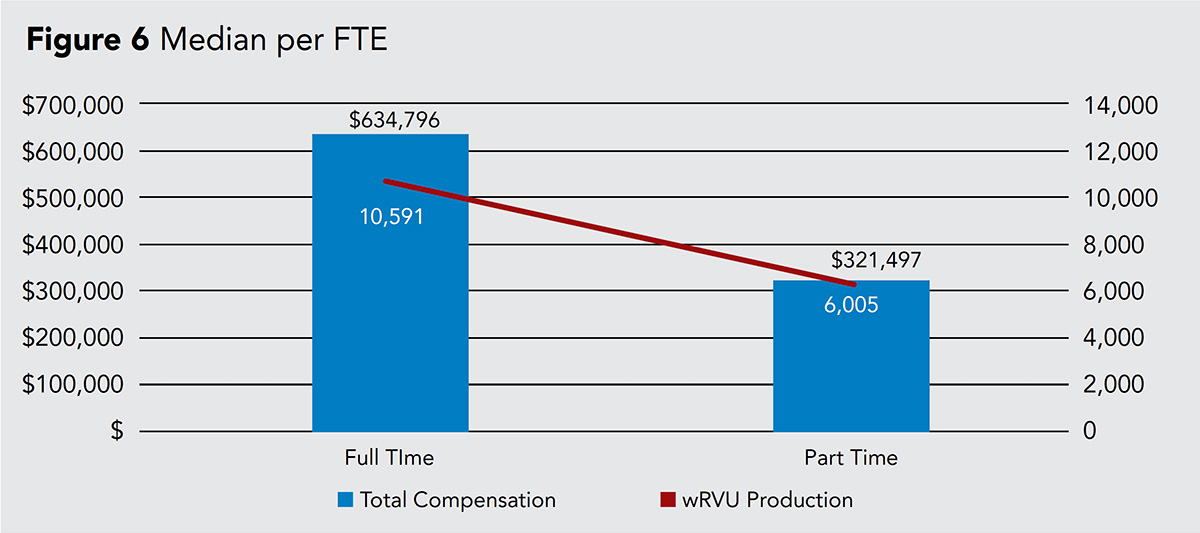
Figure 7
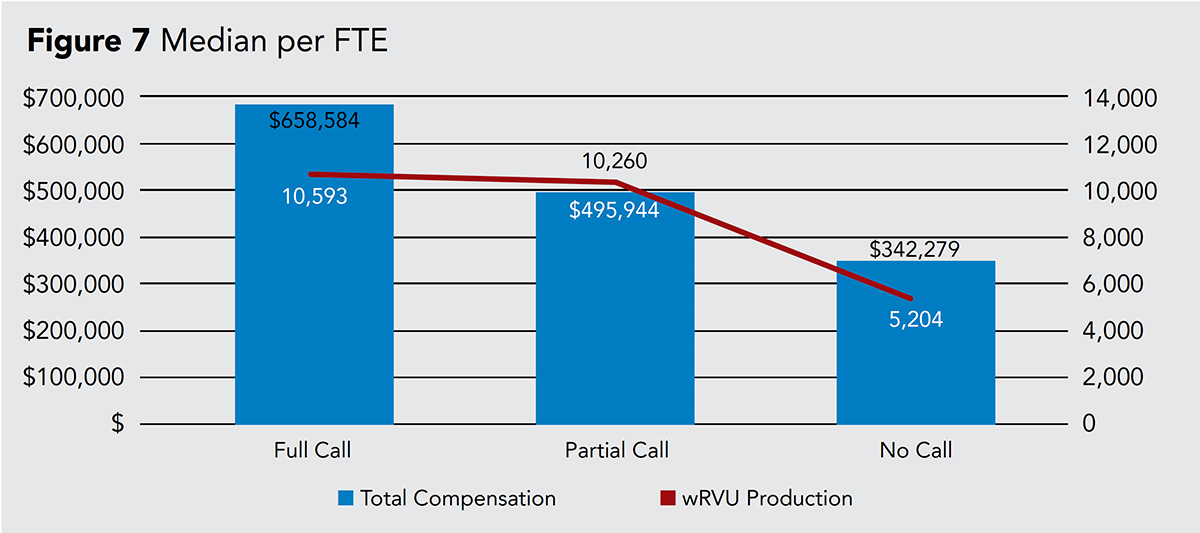
Developing an Effective and Equitable Policy
Based on decades of experience with physician slowdown and through sharing of best practices by the MedAxiom membership, there are three "commandments" or "must haves" for creating an equitable and effective policy:
- A predefined and finite time that a physician can remain in reduced status.
- A reduction in workload or call participation must have an impact on compensation.
- Create a formal policy – do not address each request individually and uniquely.
Summary
MedAxiom Report: 2020 Cardiovascular Provider Compensation and Production Survey
MedAxiom's eighth annual Cardiovascular Provider Compensation and Production Survey report contains comprehensive data and analysis for cardiovascular organizations facing a new normal amid effects of the COVID-19 pandemic. The data reveal important trends across cardiology, surgery, advanced practice providers and nonclinical compensation as many programs are re-evaluating compensation models and the definition of work productivity.
Download the full report at MedAxiom.com/CompSurvey.
Balancing the needs and desires of individual physicians with those of a group is a challenging endeavor. There are many opportunities for hard feelings or damage to the group's effectiveness. Compounding these efforts are the realities of physician shortages. With these high stakes it is best to proceed thoughtfully and commit the time necessary to consider all aspects.
Above all, create a formal policy; do not address each request individually. Reductions in workload must include a reduction to compensation. The exact impact is unique to each group, but rarely can an internal distribution plan accommodate all the nuances of slow down.
Last, allow the group the flexibility and authority to protect its ongoing concern. This is leadership's duty.
Creating a solid physician slowdown policy is complex but not impossible and available data can help the process.
In the end, however, it is a matter of leadership committing time and intellect to the process to create rules that fit the needs and culture of their respective groups.
Read more on this topic at MedAxiom.com.
Reference
- 2020 MedAxiom Cardiovascular Provider Compensation & Production Survey, based on 2019 data.
Clinical Topics: COVID-19 Hub, Geriatric Cardiology, Sleep Apnea
Keywords: ACC Publications, Cardiology Magazine, Middle Aged, Aged, Workload, COVID-19, Sleep Deprivation, Retirement, Leadership, Human Body, Reading, severe acute respiratory syndrome coronavirus 2, Physicians, Pandemics, Anxiety, Maintenance
< Back to Listings


